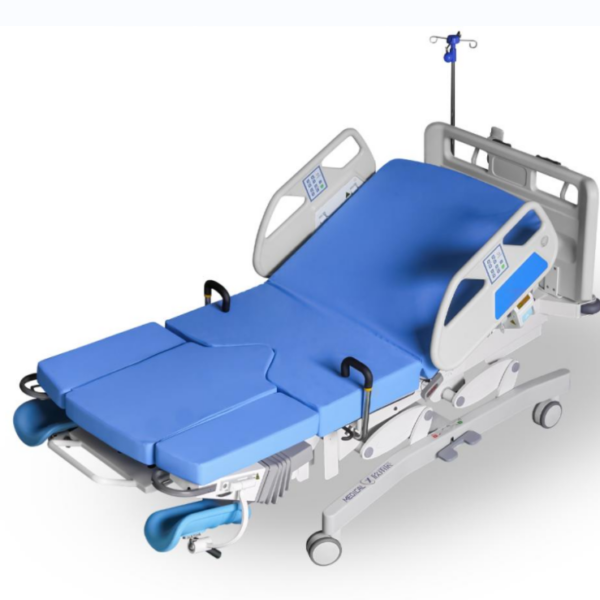Indirizzo
304 Il cardinale nord S.
Dorchester Center, MA 02124
Ore di lavoro
Dal lunedì al venerdì: 7:00 - 19:00
Fine settimana: 10:00 - 17:00
Benvenuti nel mio blog!
Prima di addentrarci nei contenuti, se sei interessato ai nostri prodotti o hai domande, non esitare a visitare il nostro Contattaci pagina sul sito web. Il nostro team è pronto ad assisterti con richieste, ordini o qualsiasi supporto di cui potresti aver bisogno.
Ora, iniziamo il nostro viaggio insieme. Spero che troviate i contenuti qui presenti interessanti, coinvolgenti e preziosi.

I tavoli operatori sono attrezzature essenziali in ambito chirurgico, in quanto forniscono una piattaforma stabile per i pazienti durante le procedure mediche. Con i progressi della tecnologia e delle pratiche sanitarie, è stata sviluppata un'ampia gamma di tavoli operatori per soddisfare diverse esigenze chirurgiche. In questa guida completa, approfondiremo i vari tipi di tavoli operatori disponibili, evidenziandone le caratteristiche, i vantaggi e le applicazioni in campo medico.


I tavoli operatori svolgono un ruolo cruciale nel garantire la sicurezza e il comfort dei pazienti sottoposti a procedure chirurgiche. Un tavolo operatorio ben progettato fornisce ai chirurghi un accesso ottimale al sito chirurgico, facilita il posizionamento del paziente e supporta l'esecuzione efficiente degli interventi medici. Scegliendo il tipo giusto di tavolo operatorio, gli operatori sanitari possono migliorare la qualità delle cure fornite ai pazienti e migliorare i risultati chirurgici.









Tavoli chirurgici generali: Questi tavoli versatili sono progettati per un'ampia gamma di procedure chirurgiche, tra cui chirurgia generale, chirurgia ortopedica e neurochirurgia. I tavoli per chirurgia generale in genere sono dotati di altezza regolabile, inclinazione e capacità di posizionamento per adattarsi a varie specialità chirurgiche.
Tavoli chirurgici speciali: I tavoli speciali sono pensati su misura per specifiche discipline chirurgiche, come chirurgia cardiovascolare, urologia e oftalmologia. Questi tavoli possono avere accessori specializzati, come supporti per le gambe, supporti per i braccioli o poggiatesta, per supportare i requisiti unici di diverse procedure.
Tabelle di imaging: I tavoli per imaging sono dotati di superfici radiotrasparenti che consentono l'imaging intraoperatorio, come raggi X, fluoroscopia o risonanza magnetica. Questi tavoli consentono ai chirurghi di eseguire procedure minimamente invasive con guida di imaging in tempo reale, migliorando la precisione e l'accuratezza durante l'intervento chirurgico.
Tavoli bariatrici: I tavoli bariatrici sono progettati per ospitare pazienti obesi o con capacità di peso più elevate. Questi tavoli presentano una struttura rinforzata, superfici più ampie e capacità di carico migliorate per garantire sicurezza e comfort dei pazienti bariatrici durante l'intervento chirurgico.
Tavoli elettroidraulici: I tavoli elettroidraulici utilizzano sistemi idraulici per regolare le posizioni del tavolo, tra cui altezza, inclinazione e inclinazione laterale. Questi tavoli offrono movimenti fluidi e precisi, consentendo ai chirurghi di effettuare regolazioni rapide durante le procedure senza interrompere il campo chirurgico.
-1.jpg)
| Tipo | Caratteristiche | Applicazioni |
|---|---|---|
| Chirurgia generale | Versatile, altezza e inclinazione regolabili | Chirurgia generale, ortopedia, neurochirurgia |
| Specialità chirurgica | Su misura per discipline specifiche | Cardiovascolare, urologia, oftalmologia |
| Immagine | Superfici radiotrasparenti per l'imaging | Procedure minimamente invasive |
| Bariatrico | Costruzione rinforzata, capacità di peso maggiori | Chirurgia bariatrica |
| Elettroidraulico | Regolazioni idrauliche per un posizionamento preciso | Rapidi aggiustamenti durante l'intervento chirurgico |
In conclusione, la scelta del tavolo operatorio appropriato è fondamentale per garantire il successo delle procedure chirurgiche e il benessere dei pazienti. Comprendendo le varie tipi di tavoli operatori disponibili e le rispettive caratteristiche e applicazioni, gli operatori sanitari possono prendere decisioni informate che ottimizzano i risultati chirurgici e l'assistenza ai pazienti. Le strutture sanitarie dovrebbero dare priorità all'investimento in tavoli operatori di alta qualità che soddisfino le esigenze specifiche delle loro specialità chirurgiche. Anche la manutenzione regolare e la formazione adeguata del personale su come utilizzare efficacemente il tavolo operatorio sono fattori cruciali per garantirne la longevità e le prestazioni ottimali. Attribuendo importanza a questi aspetti, gli operatori sanitari possono creare un ambiente chirurgico sicuro ed efficiente che promuove risultati positivi per i pazienti e la soddisfazione generale.
Quali sono le differenze? tipi di tavoli operatori disponibili sul mercato?
I tavoli operatori sono disponibili in vari tipi, tra cui tavoli idraulici, elettrici, speciali (come quelli ortopedici o radiotrasparenti) e bariatrici. Ogni tipo offre caratteristiche e funzionalità uniche per soddisfare diverse esigenze chirurgiche.
Come faccio a scegliere il tipo di tavolo operatorio più adatto al mio studio chirurgico?
Quando si seleziona un tavolo operatorio, considerare fattori quali i tipi di interventi chirurgici eseguiti, la demografia dei pazienti, i vincoli di budget e la compatibilità con le attrezzature esistenti. Consultare chirurghi e professionisti sanitari può anche fornire preziose informazioni sui requisiti specifici della struttura.
Quali sono i vantaggi dei tavoli operatori idraulici rispetto a quelli elettrici?
I tavoli operatori idraulici sono noti per la loro durevolezza, affidabilità e regolazioni fluide. Sono spesso preferiti per la loro convenienza e facilità di manutenzione. Al contrario, i tavoli operatori elettrici offrono un controllo preciso, regolazioni motorizzate e funzionalità avanzate come preset di memoria e compatibilità con apparecchiature di imaging.
Ci sono tavoli operatori progettato per interventi chirurgici specializzati?
Sì, i tavoli operatori speciali sono progettati su misura per soddisfare i requisiti unici di specifiche specialità chirurgiche. Ad esempio, i tavoli ortopedici sono dotati di attacchi specializzati per interventi chirurgici alle articolazioni, mentre i tavoli radiotrasparenti consentono immagini senza ostacoli durante procedure come la chirurgia spinale. I tavoli bariatrici sono progettati per supportare in modo sicuro i pazienti più pesanti.
Quanto è importante il posizionamento del paziente sul tavolo operatorio per i risultati chirurgici?
Il posizionamento del paziente gioca un ruolo cruciale nei risultati chirurgici, poiché influisce sull'accesso, sulla visibilità e sull'efficacia della procedura. I tavoli operatori con altezza regolabile, inclinazione e capacità di inclinazione laterale consentono ai chirurghi di ottenere un posizionamento ottimale del paziente, con conseguenti migliori risultati chirurgici e un rischio ridotto di complicazioni.
